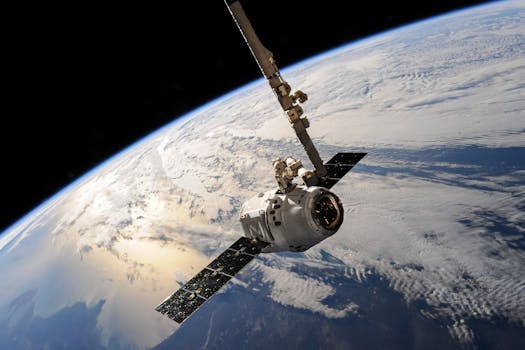The Sky’s the Limit: How Advanced Satellites are Redefining Communication and Observation with Advanced Satellites

Advanced Satellites
Advanced Satellites are redefining the limits of communication and observation, enabling us to stay connected and gather information like never before. With the rapid advancement of technology, satellites have become an essential part of our daily lives, from facilitating global communication to monitoring the Earth’s climate and weather patterns. In this article, we will explore the latest developments in satellite technology and their impact on various industries.
The use of Advanced Satellites has revolutionized the field of communication, enabling faster data transfer rates and more reliable connections. With the launch of high-throughput satellites, such as those using the Ka-band and Q/V-band frequencies, data transfer speeds have increased exponentially, allowing for seamless video conferencing, online gaming, and cloud computing. Moreover, the development of satellite constellations, such as those launched by companies like SpaceX and OneWeb, is expected to provide global coverage and bridge the digital divide, especially in remote and underserved areas.
Observation and Navigation
Advanced Satellites have also transformed the field of observation and navigation, enabling us to monitor the Earth’s surface and atmosphere with unprecedented precision. With the launch of satellites like NASA’s Landsat 8 and the European Space Agency’s Sentinel-2, high-resolution images of the Earth’s surface are now available, allowing for accurate mapping, crop monitoring, and disaster response. Additionally, the development of navigation satellites, such as the Global Positioning System (GPS) and the European Geostationary Navigation Overlay System (EGNOS), has enabled precise location tracking and timing, facilitating a wide range of applications, from aviation and maritime to agriculture and surveying.
The use of Advanced Satellites has also led to significant advancements in the field of Earth observation, enabling scientists to study the Earth’s climate, weather patterns, and natural resources with greater accuracy. With the launch of satellites like NASA’s Aura and the European Space Agency’s Envisat, scientists can now monitor the Earth’s atmosphere, oceans, and land surfaces, providing valuable insights into the Earth’s systems and processes. This information is essential for understanding and mitigating the impacts of climate change, as well as managing natural resources and predicting weather patterns.
Technological Advancements
The development of Advanced Satellites has been driven by significant technological advancements in recent years. One of the key drivers has been the advancement of propulsion systems, which has enabled satellites to reach orbit more efficiently and operate for longer periods. Additionally, the development of advanced materials and manufacturing techniques has led to the creation of lighter, more compact satellites, which are easier to launch and operate. The use of artificial intelligence and machine learning algorithms has also become more prevalent, enabling satellites to process and analyze large amounts of data in real-time, and make decisions autonomously.
The use of Advanced Satellites has also led to significant advancements in the field of space exploration, enabling humans to study the universe and explore new worlds. With the launch of satellites like NASA’s New Horizons and the European Space Agency’s Rosetta, scientists have been able to study the outer reaches of the solar system and gain insights into the formation and evolution of the universe. Additionally, the development of commercial satellite launch services, such as those offered by companies like SpaceX and Blue Origin, has made it possible for private companies and governments to launch satellites and other spacecraft into orbit, expanding the scope of space exploration and development.
Conclusion
In conclusion, Advanced Satellites are redefining the limits of communication and observation, enabling us to stay connected and gather information like never before. With the rapid advancement of technology, satellites have become an essential part of our daily lives, from facilitating global communication to monitoring the Earth’s climate and weather patterns. As the use of Advanced Satellites continues to grow and evolve, we can expect to see significant advancements in a wide range of fields, from space exploration to environmental monitoring, and from navigation to communication.




